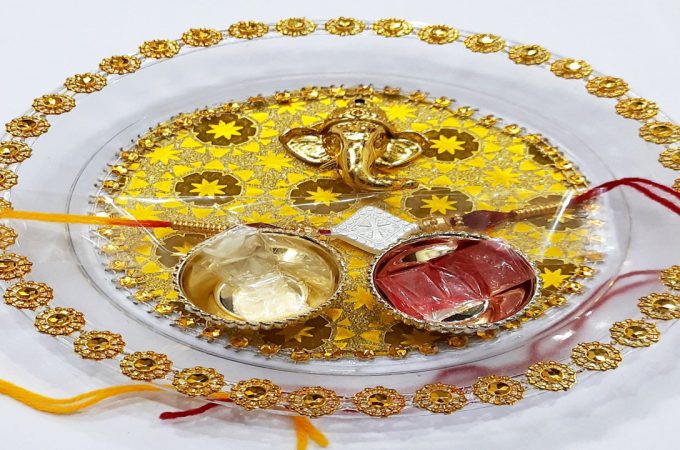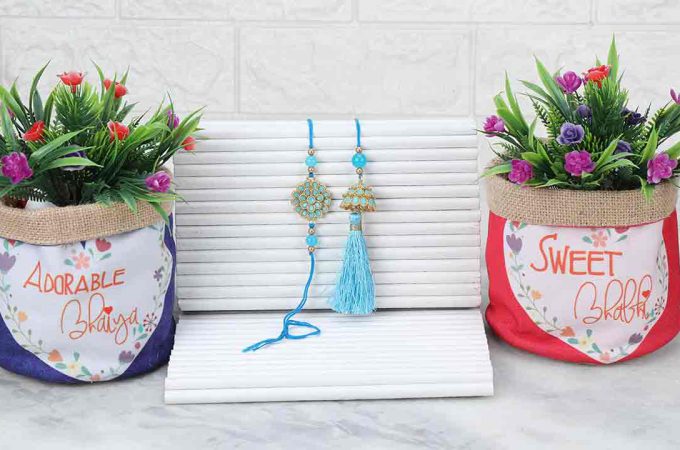
What are some lesser known facts on Raksha Bandhan?
Every festival, occasion, or celebration has some facts related to it. Similarly, the grand festival of Raksha Bandhan also has many interesting facts worth knowing. The festival glorifies brother-sister bonds that can be blood-related or made with mutual love, respect, and consent. But that does not make it any less than the purest form of sibling relationship.
Apart from knowing for its protection, promises, and ritual performing ceremonies where Rakhi gift hampers are exchanged, Raksha Bandhan has a lot of facts to offer you that are worth knowing. Since Raksha Bandhan is around the corner, we must look at some of the amazing and lesser known facts on Raksha Bandhan.
10 lesser known facts on Raksha Bandhan
Below are some amazing facts on Rakhi and Raksha Bandhan that will blow your mind and increase your knowledge regarding the festival. Read them all and find out which fact is new to you and which ones you already know.
Although Raksha Bandhan signifies a brother-sister bond centuries ago, it has also been used for protection between unrelated individuals, especially in times of war and conflict. Women used to tie Rakhis to soldiers as a symbol of protection and to strengthen the unity of their communities to fight against the enemy and be victorious in battles.
It is believed that when Alexander invaded India, his wife Roxana sent a sacred thread to King Porus, urging him not to harm her husband during the battle. He kept his word as a brother to Lady Roxana and didn’t harm Alexander after defeating him in the war.
- Rakhi is widely known as Raksha Bandhan in northern India and is called Avani Avittam or Upakarma in southern parts of India. The rituals and customs may vary in regions, but the underlying theme of love and protection between siblings remains the same.
During India’s struggle for independence from British rule, Rakhi was used as a symbol of unity and resistance against colonial power. Many freedom fighters used to tie Rakhis to each other, signifying their commitment to protect and support one another in their fight for freedom.
Rakhi making is primarily a handmade craft. It uses various materials like threads, beads, pearls, stones, sequins, and other decorative elements to create intricate and colorful Rakhis. Almost every part of India contributes to Rakhi production, and every state showcases its talent and culture in its Rakhi designs. Different regions in India have their unique traditional techniques for making Rakhis. For example, in North India, the most common method is to weave colorful threads into a beautiful bracelet. In some parts of India, women use silk threads and weave them into delicate patterns. Some places still believe in the supremacy of mauli rakhi and tie mauli threads on their brother’s wrist to mark the festival.
As Rakhi making provides employment opportunities for many artisans and small-scale businesses, the Indian government has taken various initiatives to promote handmade Rakhis and support local artisans. Especially in rural areas, crafting Rakhis becomes a significant source of income during the festive season. These initiatives aim to preserve traditional crafts and provide economic opportunities to skilled artisans.
Rakhi making not only holds cultural significance but also contributes to social bonding and emotional connections. It reinforces the beautiful relationship between brothers and sisters and fosters a sense of love and care.
With the rise of e-commerce, there is now a vast online market for Rakhis. Many websites offer a wide range of Rakhis with various designs and customization options for customers to choose from.
India’s Rakhi-making industry has also seen growth in exports. Rakhis are now sent to various countries worldwide, especially places with a significant Indian diaspora.
Hindu mythology has multiple stories where the Rakhi thread was used to showcase the power of Raksha Bandhan and the importance of sibling bonds. From Krishan ji to his sister Subhdara, from Goddess Lakshmi to King Bali, from Lady Yamuna to her brother Yamraj, from Krishan ji to Queen Draupadi, and many more, all these stories from the past are filled with instances where a sister ties Rakhi to her brother and the brother keeps his promise of protecting his sister and her happiness.
To sum up:
Raksha Bandhan is a grand festival that glorifies sibling relationships from centuries ago. The festival is not just about tying a designer rakhi to the brother, exchanging gifts and promises but has a deeper meaning to it. It has multiple facts, stories, and myths associated with it that make it even more unique, interesting, and celebration-worthy.
So in 2023, revise all your facts related to Raksha Bandhan and celebrate the festival with a better knowledge of it. If we need to include anything in the list of lesser known facts on Raksha Bandhan, please let us know in the comments below and enlighten others with your knowledge.





